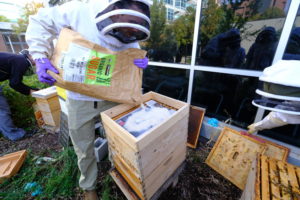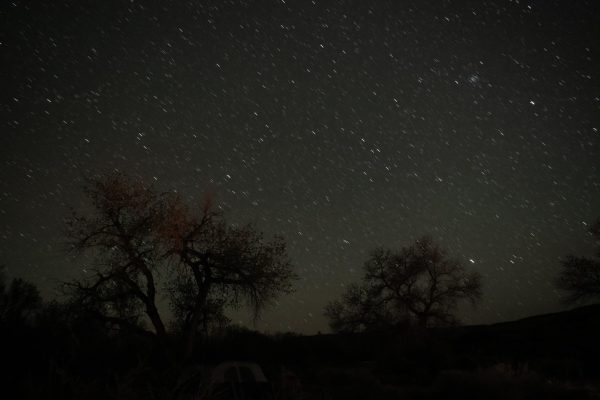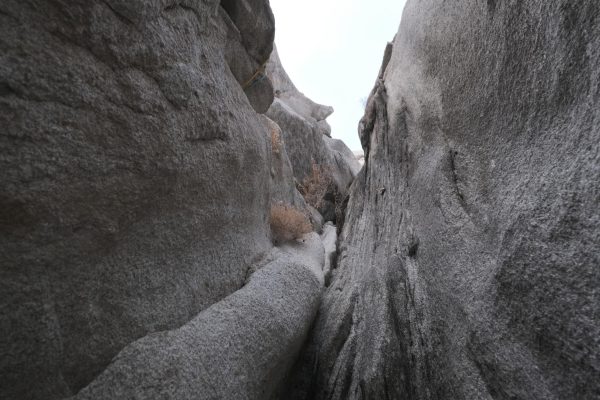Busy Bees
Utah’s Bee Diversity
The state of Utah is home to 4 different biomes: alpine, wetland, forest, and desert. Each distinct biome supports a host of unique animals and over 3,000 different native plants, to be exact. That’s a lot of plants that need pollination, which is why Utah is also home to 1,100 different species of native bees. These native bees are crucial to the environment around us, evolving with the local plants to become the most efficient pollinators we have ever seen. However, with climate change hurting populations, these pollinators are under threat.
The Inner Workings of the Hive
With multiple campaigns to save the bees, the worldwide community has taken notice. These campaigns tend to focus on honey bees, which are extremely important to the ecosystem in their own right. To understand the importance of these pollinators you must understand the inner workings of a hive. A colony consists of three types of bees: drone bees, worker bees, and the queen bee. The drone bees start as unfertilized larvae that become male bees; their sole purpose is to spread genetic information. They make up 2% of the hive, while female worker bees make up the other 98%.
Throughout a worker bee’s life, they will do multiple jobs in and out of the hive. They work as nurses for the larva, cleaners, defenders, and at the end of their life, pollinators. When pollinators leave the hive, they spread in every direction to find flowering plants. Once a bee finds a place for all the other workers they go back to alert the hive. They do this by performing a “waggle dance,” flying in a figure-eight pattern and fluttering their wings. Workers and drones live for a few weeks at most. The queen, on the other hand, lives for around three years!
The Queen Bee
A queen is selected through a process like that of a spartan warrior. When a new queen is needed, the hive will feed around 10 larvae a protein-rich solution called “royal jelly.” This will give them the nutrients to develop into queen bees. Once these queen bees are fully grown (about 16 days after fertilization), they fight to the death. Only the strongest bee’s genetic code will move on in the hive. Now the newly crowned queen leaves the hive to mate with other hive’s drone bees on what is called a nuptial flight. This is the only time the queen will ever leave the hive. She brings the genetic information she has gathered back to her colony, and for the rest of her life she will produce about 2,000 eggs a day. When a queen dies, the hive will begin the process again. However, it doesn’t always go smoothly. That’s when the beekeeper may step in to save the hive, by either getting a new queen and trying to integrate it into the hive or by splitting the hive into two and integrating the workers into other hives with a healthy queen.
The Importance of Native Bees
While honey bees are vital to the ecosystem, they aren’t as effective at pollinating the local vegetation. This is because most honey bees used in people’s hives are European honey bees, and they are not used to pollinating these foreign plants. According to the United States Geological Survey, native bees pollinate as much as 80% of the flowering plants around the world. That’s four of every five bites of fruit you eat!
The lack of attention to native bees may be attributed to the fact that they don’t fit under most people’s perception of a bee. They don’t make honey and they don’t live in a huge colony. Instead, most native bees are solitary, burrowing into holes for shelter. Nevertheless, they are more crucial to the world we live in than we will ever fully understand.
The University Bee Club
Here on campus, the University of Utah Beekeepers Association is helping native bee populations as well as keeping honey bees. The club has multiple hives scattered throughout three locations on campus: the Marriott Library, Kalhert Village, and the Eccles Health Sciences Education building. Gabe Shuster, the Hive Operations Expert, works to keep the hives healthy and mobilize students new to the club to learn the details of beekeeping. A healthy hive isn’t always easy to maintain. Shuster says that to some extent the hive can take pretty good care of itself, but troubles do still arise. One of the biggest problems is varroa mites. These mites attach to the bees, spreading disease and destroying hives. To see if the hive has a worrisome amount of these pests, the beekeeper will take a handful of bees (roughly 300) and count the number of mites latched to them. As few as 10 mites in this sample presents an issue for the hive. As winter approaches, it is important that the keepers clean up as much of the hive as possible to keep the colony healthy enough to survive the drop in temperature.

The association also has native bee
boxes around campus in places like the Edible Campus Gardens as well as pollination gardens full of local plants. The club just recently had its annual honey harvest, where they harvested beeswax and around 14 gallons of honey. Now the club is working on selling jars of honey to raise money. Half the money raised will be donated, and the other kept to fund the next year’s beekeeping.
What Can We Do?
So what can we do to help? Firstly, since native bees are solitary burrowers, it helps to have empty dirt patches in your yard, as this acts as a hotel for them. Another easy way to help is to allow native plants to flower in your yard, instead of importing foreign flora. Lastly, be aware of your environmental impact because humans, bees, and every other species on earth depend on it.
The post Busy Bees appeared first on Wasatch Magazine.





